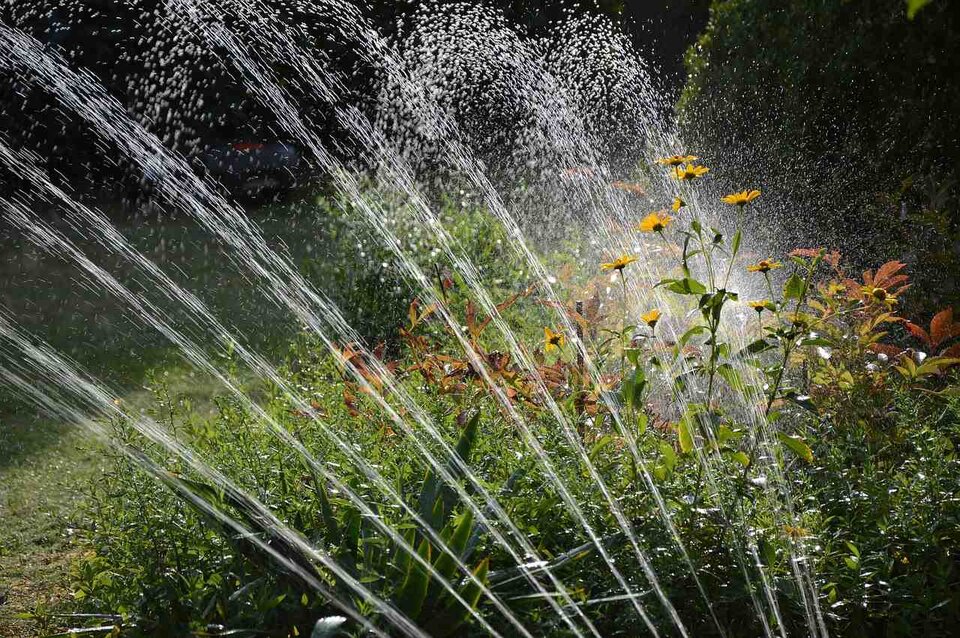Separate Plants by Irrigation Needs

When we plant a garden or flower bed, we think about sunlight preferences, color and bloom times most often, but there are other factors to think about including water requirements for the plants.
Water Needs
All plants need water to survive, but they differ greatly in how much they need. Some plants are best planted along a pond edge or other very wet location because they like swampy, over irrigated locations. Where other plants require dry, well-drained soil. There are even some great plants used in rain gardens and similar areas that actually do well in both wet locations as well as dry conditions to overcome the changing environment when water collects during rain events and dries out between rains.
It is important to remember what type of soil moisture your plant needs and locate it among other plants with similar requirements. If you plant something that likes to be in high moisture locations along with a plant that prefers dry conditions, only one of those plants will be happy with the irrigation they receive. You will either over water the drought-resistant plant or under water the water-loving plant. Group your plants together based on their irrigation requirements so that all the plants in a location receive the correct amount of irrigation and have the soil moisture they need to grow best.
One great way to think about this is the difference in irrigation requirements between turf and trees. When watering trees, strive to get the water down about 12-18 inches deep; plan for deep, infrequent irrigation, such as 1-3 irrigations per month for mature, established trees based on temperature and rainfall. Turf roots are generally 4-6 inches deep, so irrigation (when needed) is more frequent and shallower. If you constantly irrigate shallowly for turf and don’t irrigate the tree separately, your tree will be stressed due to inadequate irrigation. Frequent, shallow turf irrigation can also impede oxygen penetration into the soil – oxygen is needed for good tree root health and growth – resulting in tree root death.
Water-loving Plants
Most plants do need a level of oxygen provided to their roots. However, there is a good-sized list of plants that can tolerate moist sites better than other plants. Obviously, when we think about water loving plants we think of things like bald cypress and swamp white oak that grow in swampy areas, and ferns which love wet, shady locations. However, many other plants will survive and even thrive in very wet locations.
Some trees that grow well in high moisture locations include red maple, hackberry, river birch, catalpa, and sycamore. When fishing at many different lakes, I often notice sycamores surrounding the lakes and they are sometimes in locations where the roots are completely covered by water.
There is also a good list of shrubs to grow in wet locations which includes chokeberry, gray and red twig dogwood, and a couple of viburnums – American cranberrybush viburnum and arrowwood viburnum.
Some water-loving perennials are Siberian iris, spiderwort, hardy hibiscus, turtlehead, primrose, lungwort, daylily, many hostas, and plumbago.
Drought Tolerant Plants
All plants need water, but some need irrigation more than others. However, there are still quite a few plants that can tolerate dry conditions well. Drought tolerant plants are “plants that persist for three or more years with little or no supplemental watering”, according to the NebGuide ‘Perennials in Water-Wise Landscapes’. Note - this means the plants are receiving normal levels of annual rainfall – not extended periods of exceptional drought. Even drought-tolerant plants may suffer during multiple years of extended drought.
These plants may struggle if they are grown in locations of excessive irrigation or high rainfall. This makes it very important to group drought tolerant plants together to ensure you don’t overwater them.
Some great drought-tolerant plants include many of the asters like coneflowers, blanket flower, Shasta daisy, and black-eyed Susan. It also includes butterfly milkweed, catmint, cranesbill or hardy geranium, baptisia or blue false indigo, gayfeather, goldenrod, leadplant, penstemon, pasqueflower, peony, phlox, and sedum.
Some great drought tolerant trees include Kentucky coffeetree, ginkgo, sweetgum, and honeylocust.
There are also a lot of great shrubs to use in drought locations including forsythia, cotoneaster, New Jersey tea, beautybush, lilac, coralberry and snowberry, and a couple of viburnums – nannyberry viburnum and blackhaw viburnum.
I’m Flexible…
Some of our plants, including hackberry, gray dogwood, daylily, hosta, and plumbago are listed as both water-loving and drought tolerant. This just means that they are more adaptable and can take many different weather conditions.
Just be sure to pay attention to the water requirements of your plants before you plant them and remember to group them with other plants of similar water needs.
This article was reviewed by Sarah Browning